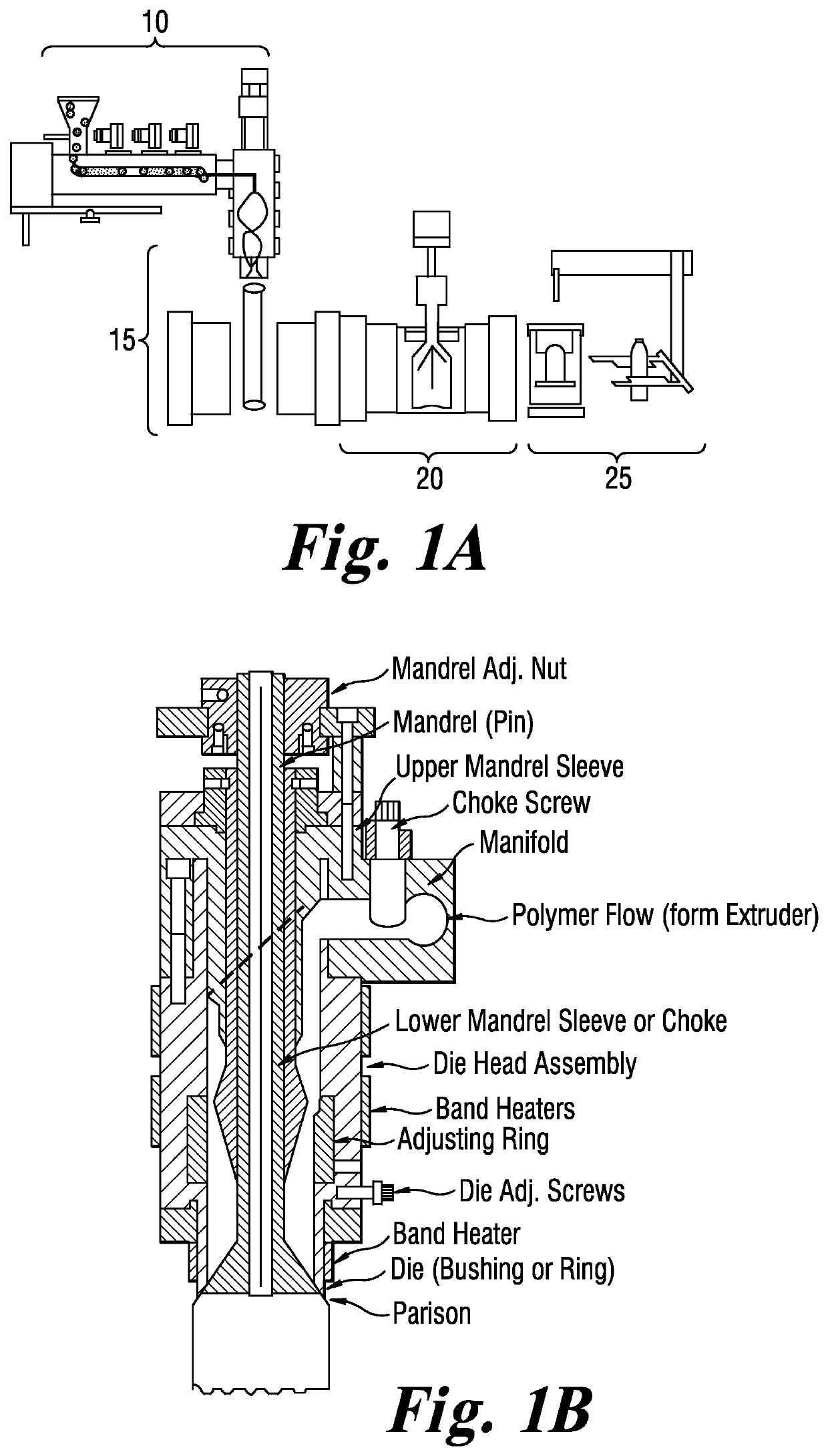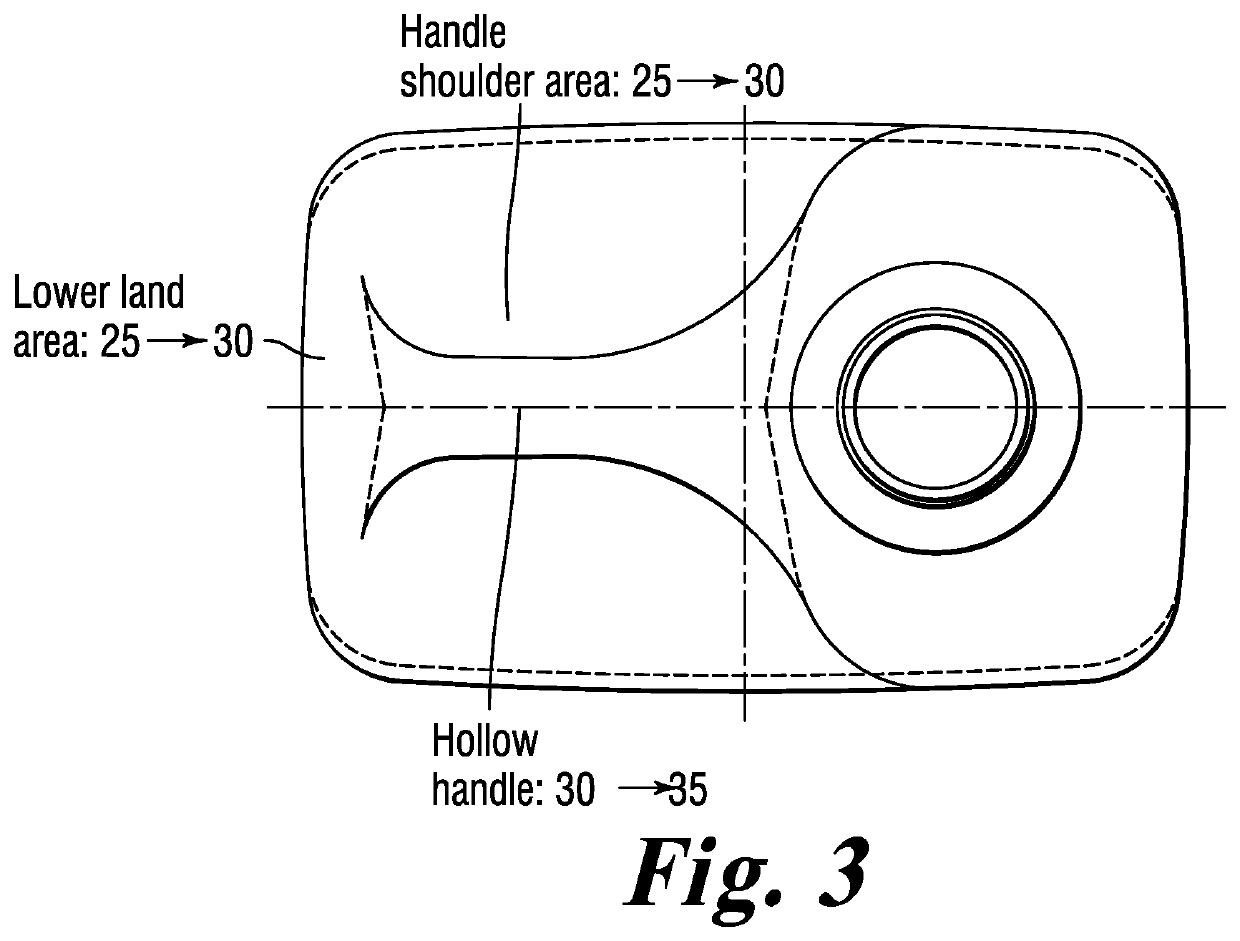EBM ePET container drop-impact enhancement
a technology of epet and drop-impact resistance, which is applied in the field of improving the drop-impact resistance of extrusion blow-molded (ebm) articles, can solve the problems of entrapped air on the surface of the pet resin, all drop-impact failures, and marring of the pet resin surface, so as to reduce the stress riser, and smooth out any sharp edges
- Summary
- Abstract
- Description
- Claims
- Application Information
AI Technical Summary
Benefits of technology
Problems solved by technology
Method used
Image
Examples
Embodiment Construction
[0030]The present invention relates a method for improving the drop-impact resistance of extrusion blow molded (EBM) articles, preferably poly(ethylene terephthalate) (PET) containers and bottles obtained from ultra-high intrinsic viscosity (IV) PET resins, and articles obtained by the method.
[0031]Conventionally, a resin preform is transformed to a bottle or a container by blow-molding. Blow molding, also known as blow forming, is a manufacturing process by which hollow plastic parts are formed. It is a process used to produce hollow objects from thermoplastic. In general, there are three main types of blow molding: extrusion blow molding, injection blow molding, and stretch blow molding. The blow molding process begins with melting down the plastic pellets and forming a parison or preform. The parison is a tube-like piece of plastic with a hole in one end in which compressed air can pass through.
[0032]The basic process has two fundamental phases. First, a preform (or parison) of h...
PUM
| Property | Measurement | Unit |
|---|---|---|
| thickness | aaaaa | aaaaa |
| thickness | aaaaa | aaaaa |
| weight | aaaaa | aaaaa |
Abstract
Description
Claims
Application Information
 Login to View More
Login to View More - R&D
- Intellectual Property
- Life Sciences
- Materials
- Tech Scout
- Unparalleled Data Quality
- Higher Quality Content
- 60% Fewer Hallucinations
Browse by: Latest US Patents, China's latest patents, Technical Efficacy Thesaurus, Application Domain, Technology Topic, Popular Technical Reports.
© 2025 PatSnap. All rights reserved.Legal|Privacy policy|Modern Slavery Act Transparency Statement|Sitemap|About US| Contact US: help@patsnap.com



